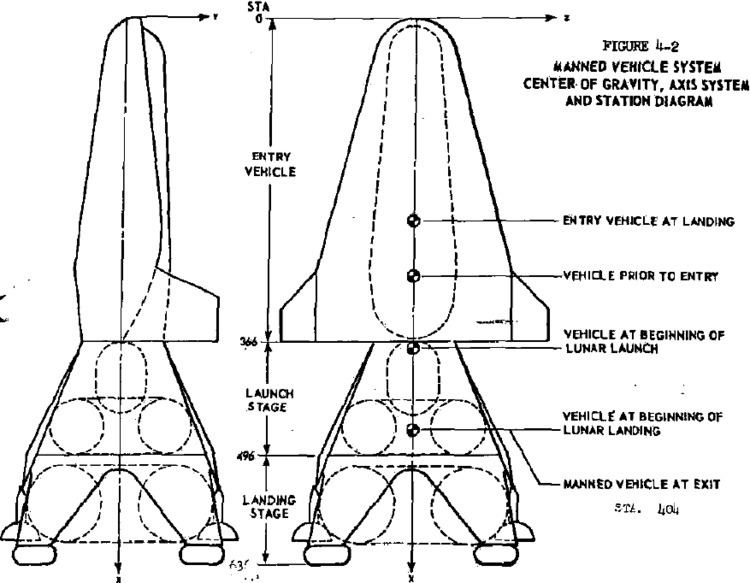Controlled by United States Garrison 21 airmen | In use Project canceled | |
 | ||
Type Underground Air Force base Built Planned to begin after 1967 | ||
The Lunex Project was a US Air Force 1958 plan for a manned lunar landing prior to the Apollo Program. The final lunar expedition plan in 1961 was for a 21-airman underground Air Force base on the Moon by 1968 at a total cost of $7.5 billion. The primary distinction between the later Apollo missions and Lunex was the orbital rendezvous maneuver. The Lunex vehicle, composed of a landing module and a lifting body return/re-entry module, would land the entire vehicle and all astronauts on the surface, whereas the final Apollo mission involved a separate ascent module leaving the command module and service module connected in lunar orbit with a single astronaut. The original plan for Apollo was for direct ascent, similar to Lunex.
Contents
Associated vehicles (estimates)
Lunex Lunar Lander
Location
Selection of base sites were to be made by automated probes, with Kepler crater being a studied location.
Background
Lunex planned to make its first lunar landing and return in 1967, in order to beat the Soviets and demonstrate conclusively that America could win future international competition in technology with the USSR. The Air Force felt that no achievement short of a lunar landing would have the required historical significance.
The use of the direct ascent profile was considered to be the most promising because it eliminated some of the complexities of the Lunar orbit rendezvous that would later be used by Apollo: in particular there would be no need to develop rendezvous techniques in space. The down side was that the Lunex spacecraft would be much heavier than Apollo to carry the extra fuel required to land the entire spacecraft on the Moon and return it to lunar orbit, and consequently a larger rocket would be required to send it to the Moon.
Implementation
Three milestones were set:
After 1968, a Permanently Manned Lunar Expedition was planned.
Problems
The main problems to be solved were:
